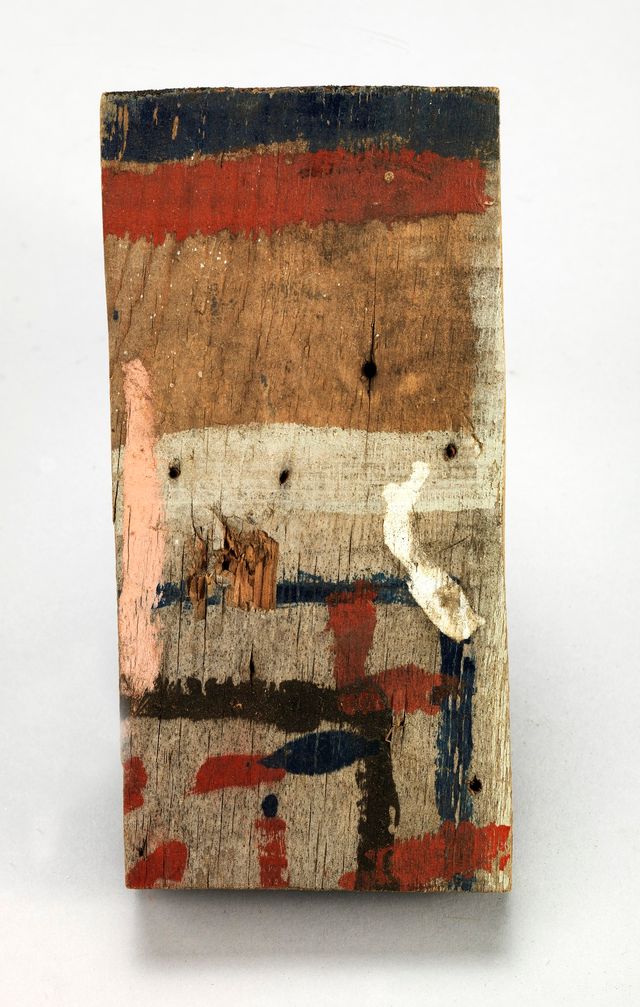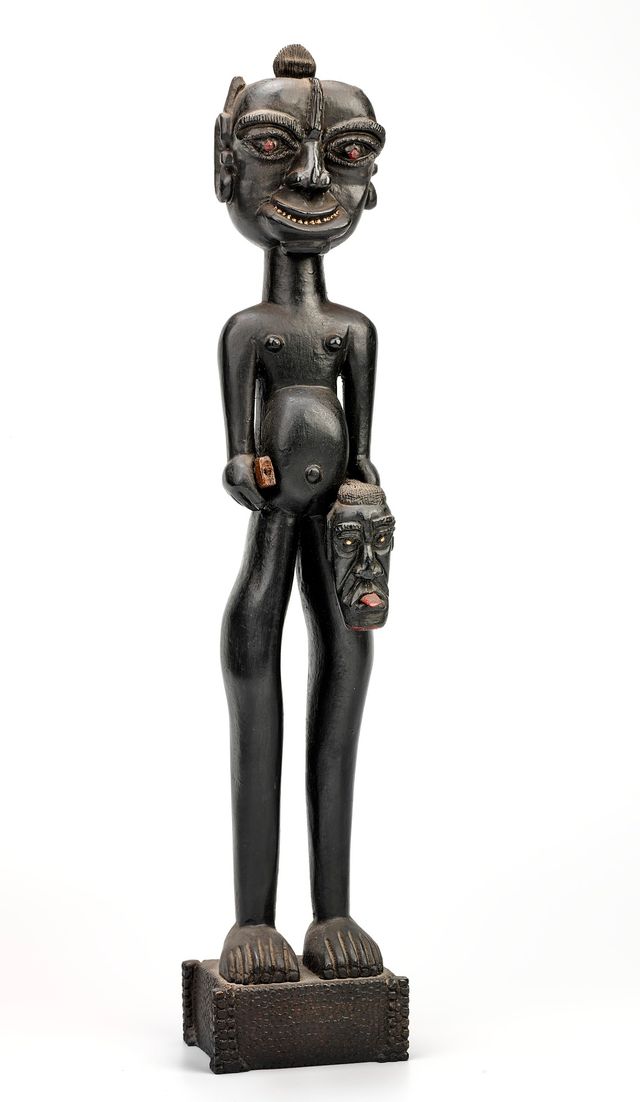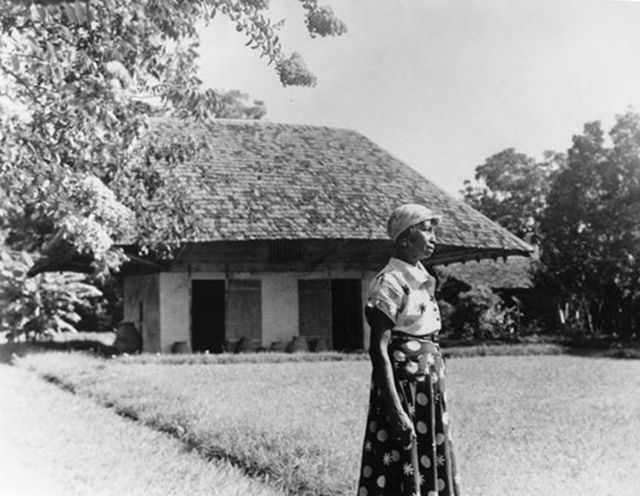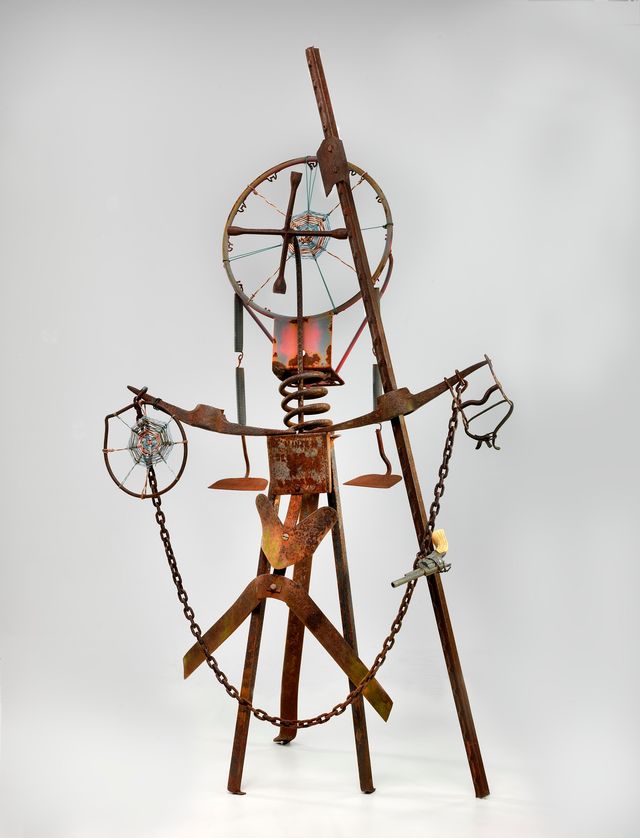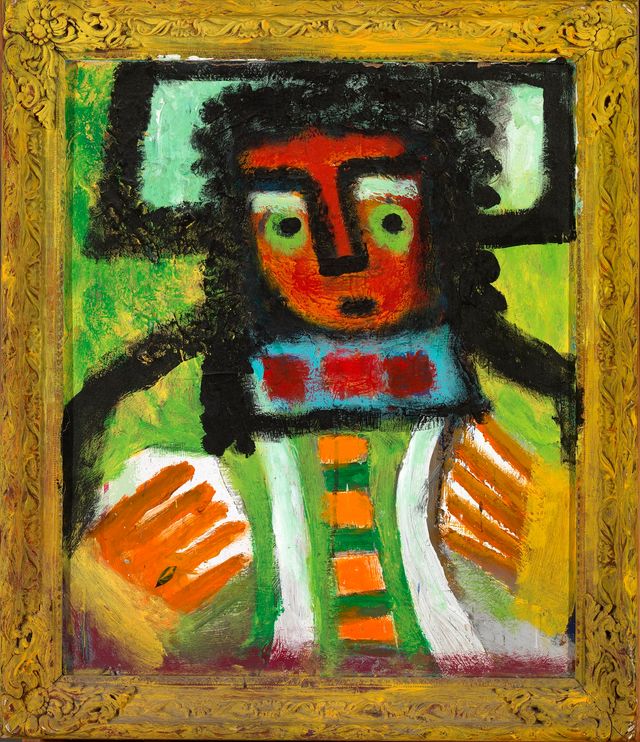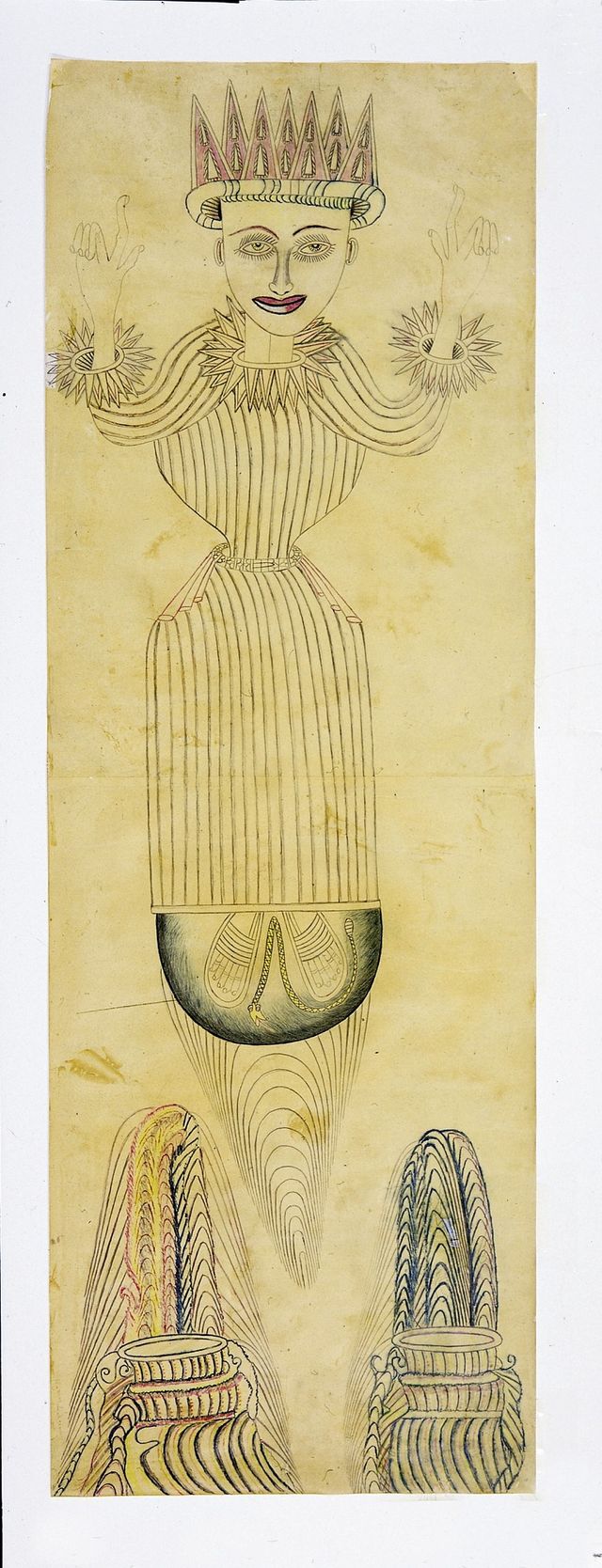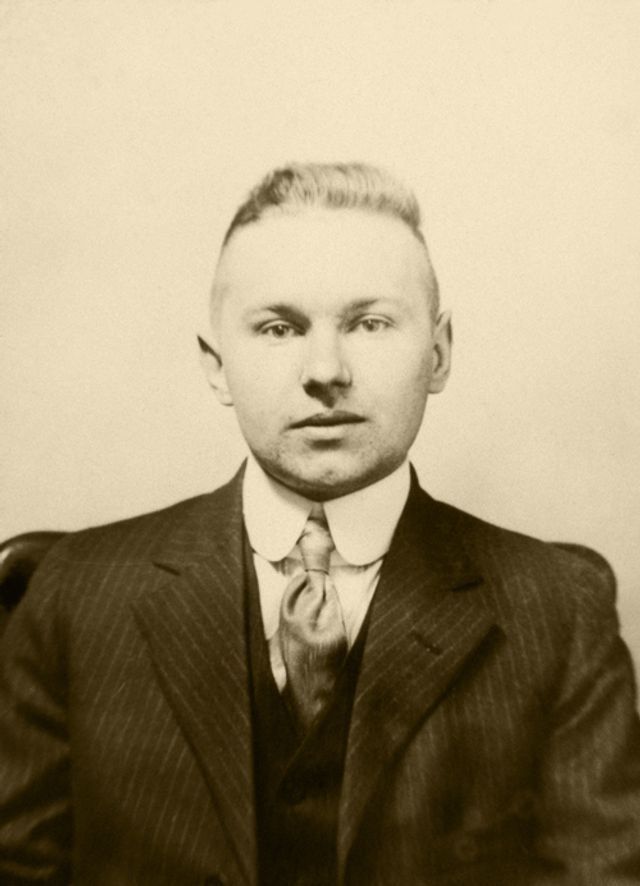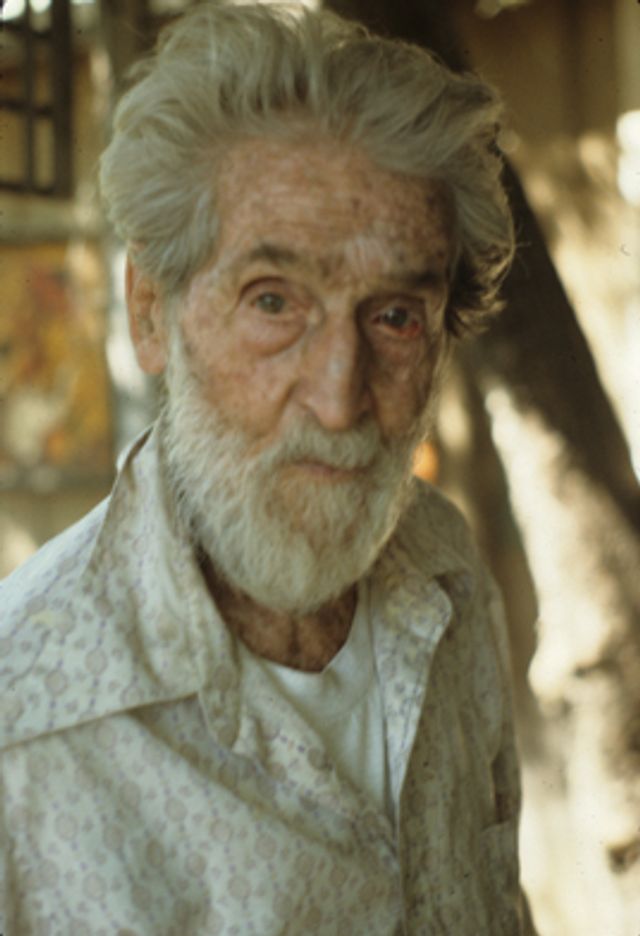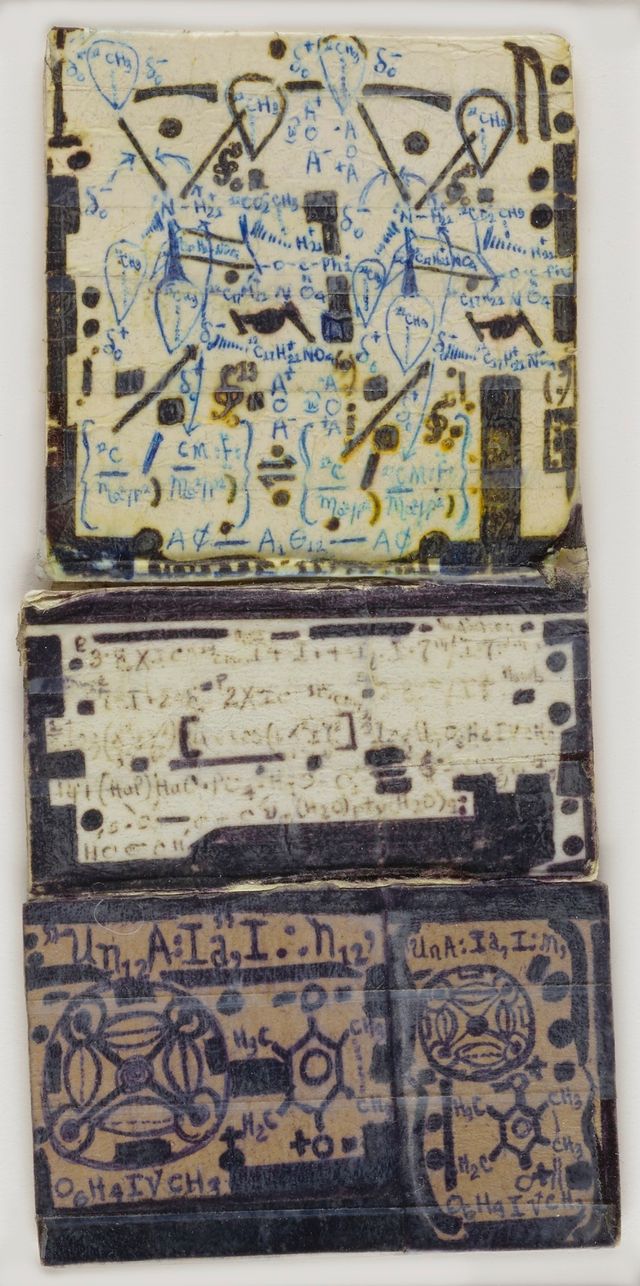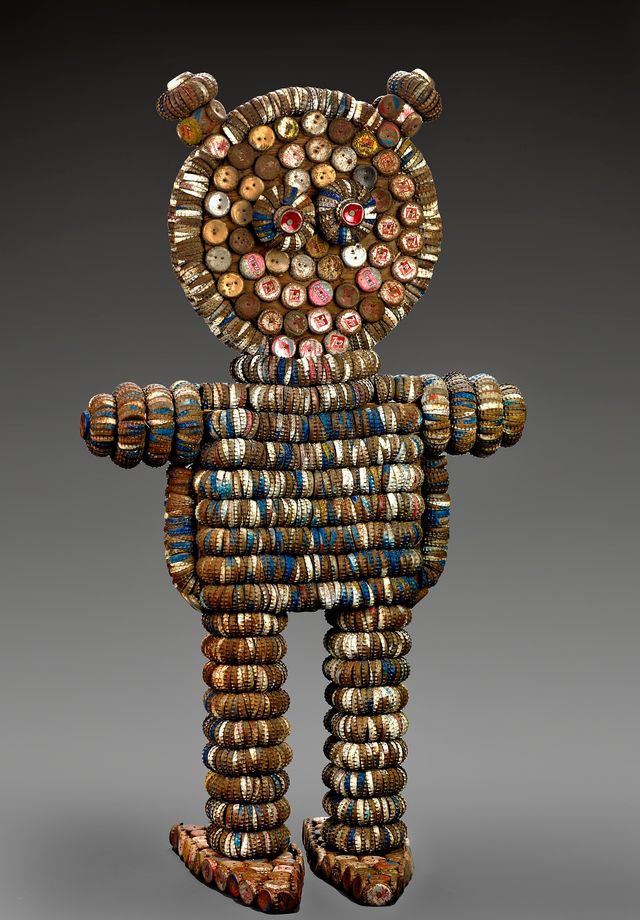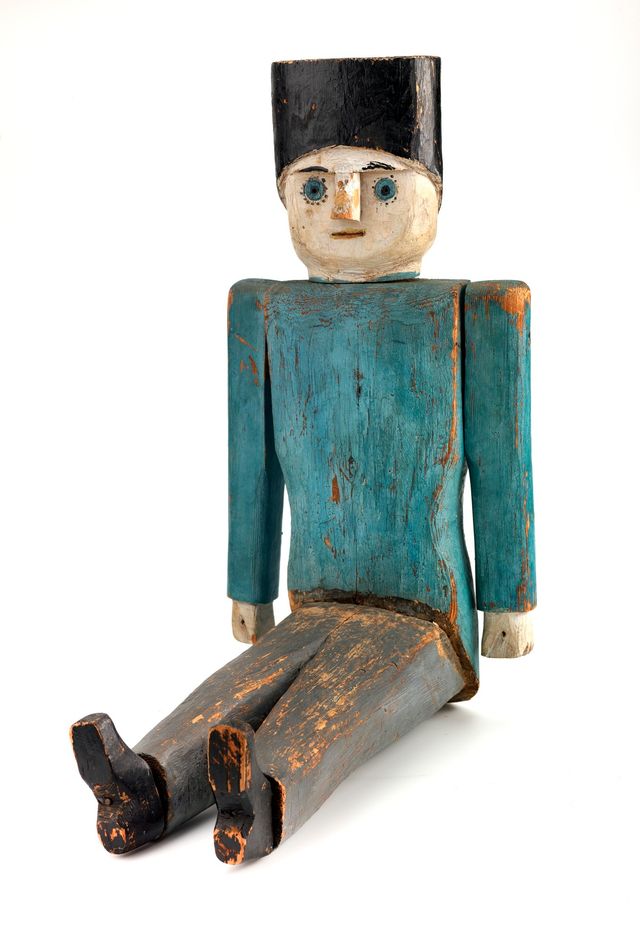Galleries for Folk and Self-Taught Art
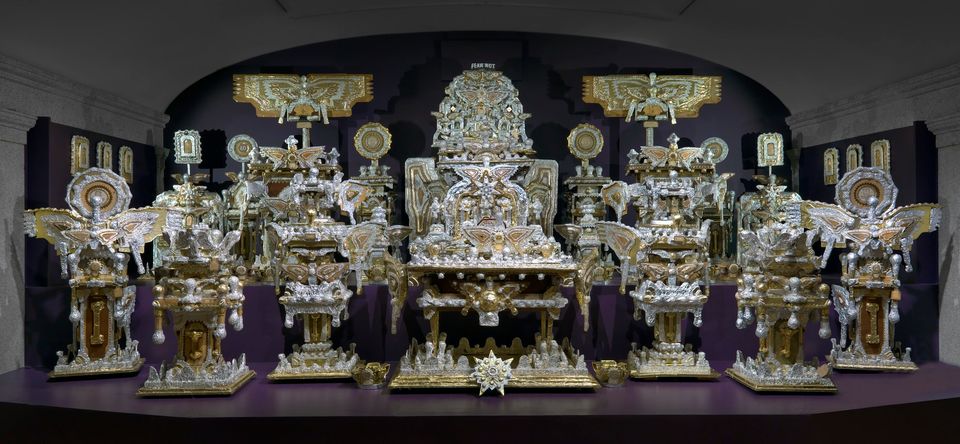
James Hampton's Throne of the Third Heaven of the Nations' Millennium General Assembly, ca. 1950-1964, mixed media, Smithsonian American Art Museum, Gift of anonymous donors, 1970.353.1-.116
SAAM’s collection of folk and self-taught art represents the powerful vision of America’s untrained and vernacular artists. Represented in the museum’s collection are pieces that draw on tradition — such as quilts — as well as artworks that reveal a more personal vision. The museum has reimagined its permanent collection galleries for art by untrained artists, which now display several dozen recent acquisitions and an expanded presentation of the beloved Throne of the Third Heaven of the Nations Millennium General Assembly by James Hampton.
Description
Recently acquired works by Consuelo Gonzalez Amezcua, Emery Blagdon, David Butler, Ulysses Davis, Ralph Fasanella, Clementine Hunter, Dan Miller, Joe Minter, Eddy Mumma, J.B. Murray, Achilles Rizzoli, Melvin Way, Charlie Willeto, Clarence and Grace Woolsey, Purvis Young, and Albert Zahn join visitor favorites by Thornton Dial, Lonnie Holley, Martín Ramírez, and Jon Serl. A striking presence in the galleries is a display of more than sixty sculptures and paintings by Emery Blagdon that represents his constantly changing Healing Machine. It is the second-largest installation of his work on public view in the United States.
The new installation of the Throne includes Hampton’s personal journal, written primarily in an asemic, or unreadable script, and a chalkboard still showing some of Hampton’s sketched plans for the Throne. Both are on public view for the first time; the journal will be on display for a limited time.
Visiting Information
Videos
Credit
The museum’s Herbert Waide Hemphill, Jr. American Folk Art Fund provided support for this installation.
Artists
Consuelo "Chelo" González Amézcua was a self-taught artist born in Piedras Negras, Mexico, in 1903. She immigrated to the United States in 1913.
Davis developed his wood-carving skills on his own over a period of more than fifty years, beginning during his childhood in Fitzgerald, Georgia.
Ralph Fasanella celebrated the common man and tackled complex issues of postwar America in colorful, socially-minded paintings. Fasanella was born in the Bronx and grew up in the working-class neighborhoods of New York.
Miller was born in California’s Castro Valley in 1961 and joined Creative Growth, the same art studio where Judith Scott worked, in 1992. There he began making large, abstracted graphic works that function as communiqués in a self-shaped language.
Ramírez left Mexico as a young man to seek employment in the United States.
According to Jon Serl, this painting began one afternoon with the drawing of a neighborhood boy who interrupted Serl's painting.
A traditional Navajo sheepherder, Charlie Willeto began carving in the early 1960s, only a few years before his death.















